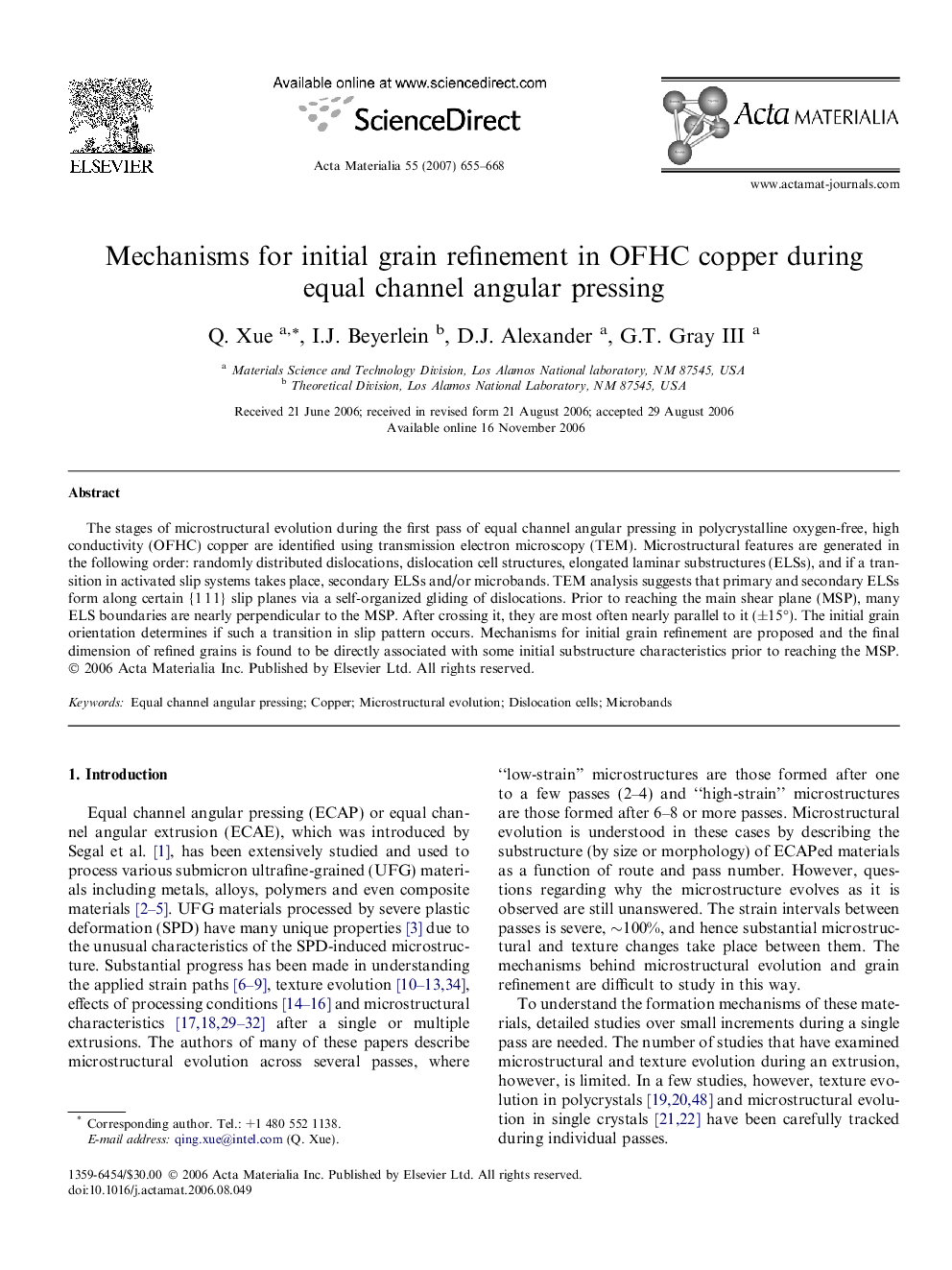| Article ID | Journal | Published Year | Pages | File Type |
|---|---|---|---|---|
| 1450236 | Acta Materialia | 2007 | 14 Pages |
The stages of microstructural evolution during the first pass of equal channel angular pressing in polycrystalline oxygen-free, high conductivity (OFHC) copper are identified using transmission electron microscopy (TEM). Microstructural features are generated in the following order: randomly distributed dislocations, dislocation cell structures, elongated laminar substructures (ELSs), and if a transition in activated slip systems takes place, secondary ELSs and/or microbands. TEM analysis suggests that primary and secondary ELSs form along certain {1 1 1} slip planes via a self-organized gliding of dislocations. Prior to reaching the main shear plane (MSP), many ELS boundaries are nearly perpendicular to the MSP. After crossing it, they are most often nearly parallel to it (±15°). The initial grain orientation determines if such a transition in slip pattern occurs. Mechanisms for initial grain refinement are proposed and the final dimension of refined grains is found to be directly associated with some initial substructure characteristics prior to reaching the MSP.
